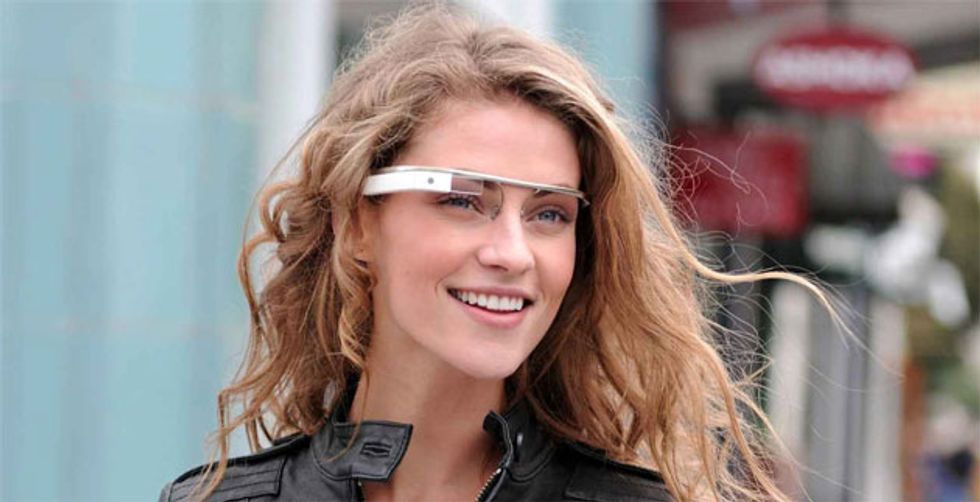Advertising is a fickle industry. One minute you’re listening to a spot on the radio, the next you’re engrossed into a completely digitalized environment with advertisements sneaking into your every thought. Well, we haven’t reached that point yet, but Google Glass is strongly considering it.
Last month, the Mountain View-based tech giant hinted at a new “pay-per-gaze” ad system in their latest patent, which will charge advertisers by the number of times someone literally looks at their ads through the images displayed by the head-mounted technology.
But advertising through Google Glass presents a sticky problem. Consumers want the ability to enjoy the full range of features that the wearable computer affords without being bombarded with advertisements filling their line of site. So how will Google monetize on its product?
The answer is something called reality-augmented advertising -- a way in which “people interacting with ads in the real world could be analyzed in the digital world,” according to Bits blog of the New York Times.
Let’s paint a clearer picture. Imagine yourself walking down Union Street and peeking through various shops and restaurants sporting the latest version of Google Glass (because let’s face it, getting caught with an outdated model is social suicide). If you decide to linger on a certain store, restaurant or product, your smart glasses just may trigger another layer of reality-augmented ads, one in which could display anything from a digital menu to a racy Gap commercial. And advertisers will pay more given the amount of time the subject interacts with that ad.
What’s even cooler? In the next few years, Google could theoretically implement a pay-per-emotion advertising model, which uses eye-tracking technology to gauge the wearer’s responses to a real-world object -- something that’s already been conceived by a few other tech companies.
“Pupil dilation can be correlated with emotional states, (e.g.,surprise, interest, etc.),” reads Google’s new patent. And with a camera directly fixated onto a person’s eyes, it wouldn’t be hard to track their emotional responses and turn out a more customized advertisement.
Google doesn’t have any immediate plans for building such a technology for its smart glasses. But it’s easy to foresee advertisers paying big bucks to promote their brand through reality-augmented advertising and raking in the benefits.
Follow @NickTrenchard for your inside scoop on all things Bay Area tech





















